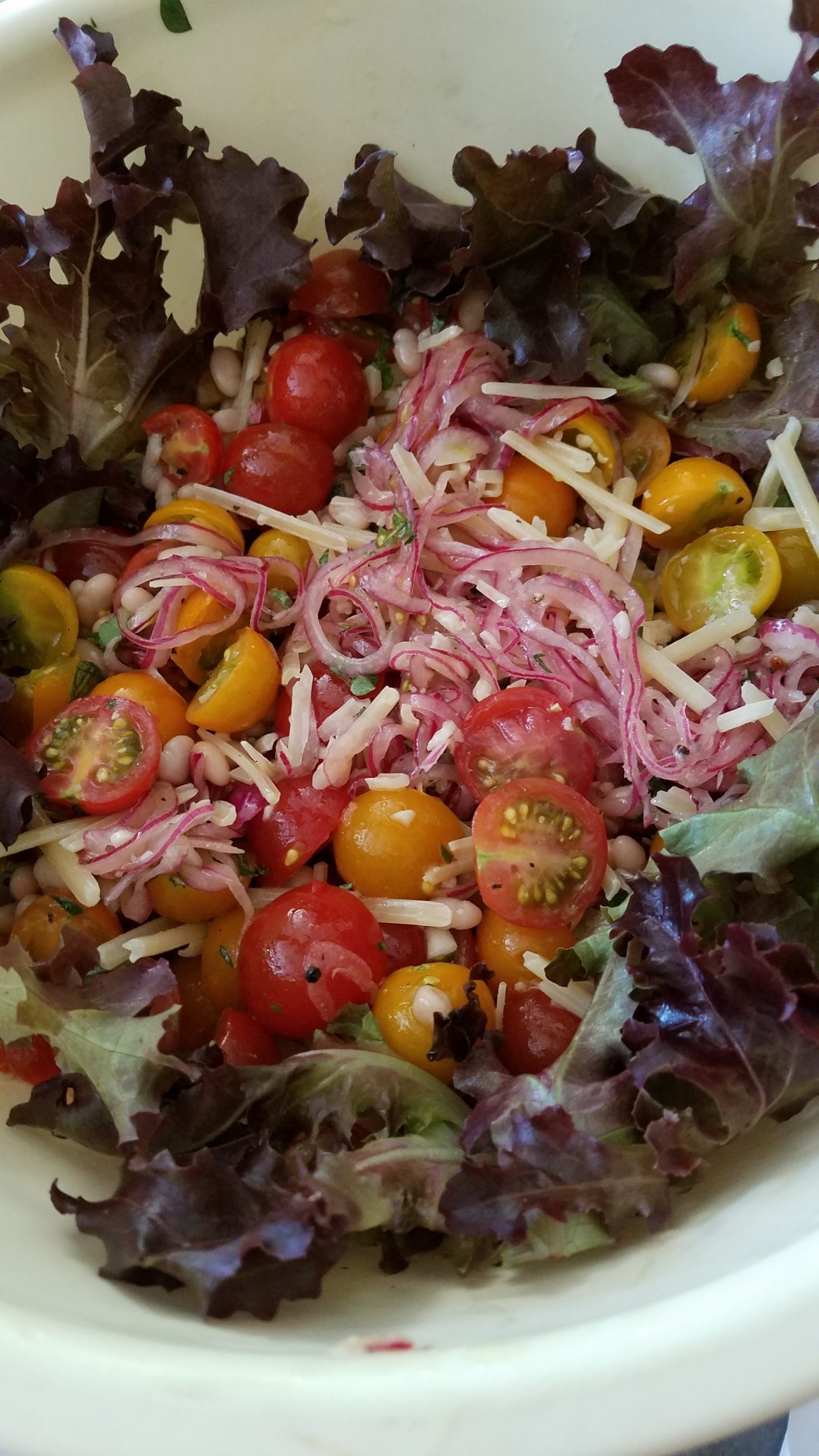
Future Food Sources: Reaping What We Sow
Here north of Boston, July was not a good month for vegetable gardens. Record rainfall. Cold temperatures. And a bumper crop of weeds. As for the vegetables, the tomatoes were not ripening as they should, and others were slow to mature. Sweet corn I had purchased from a local farm was good, but not as sweet as I remembered. Don’t blame the farmer; it’s the cold, wet weather. Maturing corn likes hot, sunny days, and we didn’t see enough of them in July.
But things are looking up for my garden; I have a pretty good crop of cherry tomatoes and made this beautiful salad last week (pictured). The cucumbers are looking good, and this salad with Asian flavors is on the menu.
Looking beyond my own garden plot, though, weather events and shrinking farmland are on my mind. I saw my share of weather-related crop events growing up on the farm: a spring so dry the germinating corn couldn’t break through the soil crust; wet fields where harvesters become mired in mud; wind damage that flattened ripe fields of oats, bringing harvesting to a grinding crawl. And when I went back to visit this July, I saw first-hand a field of corn flattened by a derecho in the town of Lindenwood, near where I grew up. It’s dispiriting that these weather events affecting agriculture are becoming more frequent, and they are not isolated to the Midwest.
Preserving land and water for food production
Here’s what’s happening in the American breadbasket. Major water shortages in California’s Central Valley are forcing the state to institute water shut-offs to farmers there who grow 250 different types of crops — a quarter of the nation’s food and 40 percent of our fruits and nuts. Meanwhile, while no one is paying attention, prime agricultural land is being converted to housing tracts and golf courses. Even in a good year, American farm margins are tight, and family farmers continue to sell their land in part because it is so difficult to make a profit.
Why should you care? Because it’s going to have a major impact on the world’s food supply. This is a big wake-up call if you’re planning on feeding your family in the future. We need to create a new way to see ourselves and the world around.
I advocate that we all should make it a point to buy from our local farms and farm markets whenever possible, and we should encourage them to survive in the long term. We’re going to find that we need the farmland more than we need large residential developments, each house on a half-acre of lawn with a swimming pool using up precious water supplies.
Considering our food sources
We also need to pay more attention to the sources of our food. Buying strawberries shipped to New England from California? Maybe choose local blueberries instead – and possibly pay a little more for wild blueberries from a family farm. Picking up New Zealand Granny Smith apples at the supermarket? Consider instead patronizing a local orchard, which might offer other foodstuffs such as cheese, honey, and baked goods. Buying fresh asparagus in November? You might instead can it or freeze it when it’s fresh in your area, and enjoy the fruits of your labor all winter.
What are your thoughts on the subject?
To comment, please click on “Read in Browser” or on the headline to view the blog on the website. You can log in and comment at the end of the blog to share your thoughts and start a discussion.
If you’d like to share the blog, click on the Facebook icon or one of the others. Thanks!




